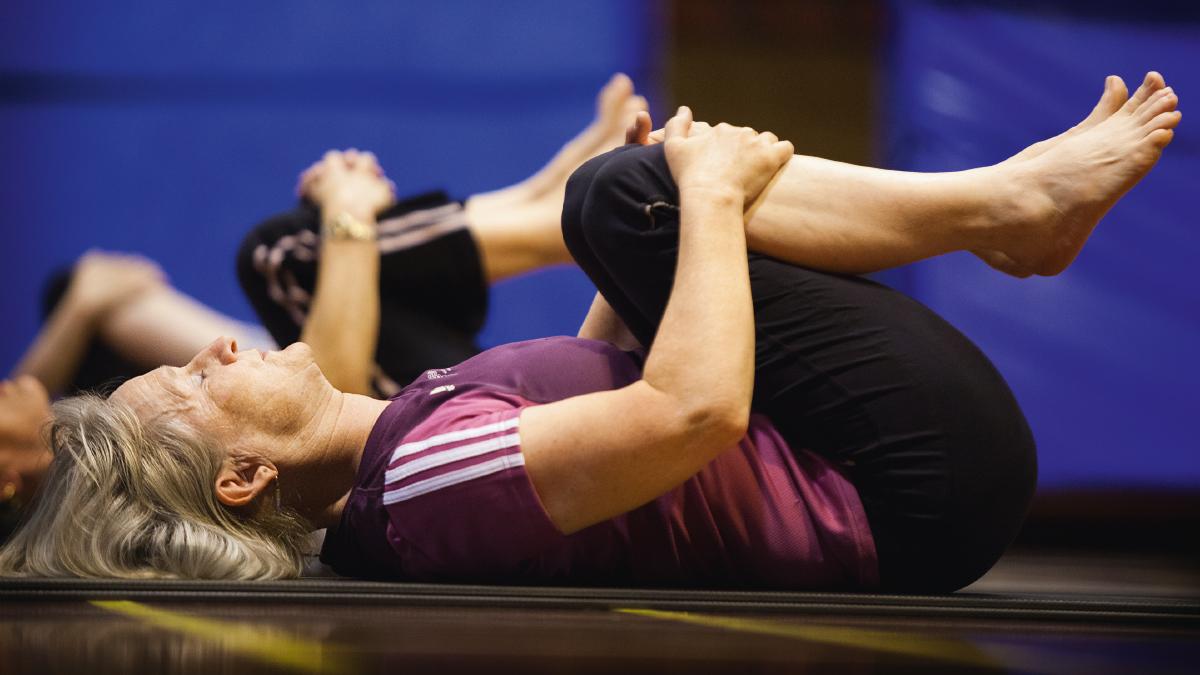Read about the latest in research

Why was this study needed?
In the UK, 11.8 million people are aged 65 or older, with numbers increasing each year. Maintaining physical fitness in this age group is of paramount importance for the prevention of falls and cardiovascular disease but also to ensure mental wellbeing.
Mat Pilates is a form of exercise that only requires a mat or minimal equipment, such as rubber bands and Swiss balls. It aims to strengthen the core muscles. It also focuses on increased flexibility and balance. Pilates has been gaining popularity, and the 2005 UK national standard for Pilates ensures teachers are sufficiently skilled. Pilates teachers must have at least Level 3 to be on the UK Register of Exercise Professionals.
Though, in theory, Pilates should be beneficial for older adults, there has been limited objective evidence.
What did this study do?
This systematic review included nine randomised controlled trials comparing mat Pilates with no exercise. Studies included 415 adults aged over 60 years with no recorded health concerns. Pilates sessions ranged from 50 to 60 minutes, two to four times per week, for four to 24 weeks. The studies were conducted in Brazil, Israel, Turkey and South Africa.
Each study used different scales to measure each element of fitness. Therefore, results were converted into a standardised mean difference (SMD). They defined a difference of 0.2 as a small effect, 0.2 to 0.8 a moderate effect, and over 0.8 a large effect.
DoH guidelines recommend that over 65's have at least 150 mins moderate activity each week
Five studies were assessed as high quality and four low quality. However, most study personnel were aware which group participants were in, either at the time of allocation or assessment, which could have biased results in favour of Pilates.
What did it find?
Mat Pilates gave a large improvement in all the following elements compared to no exercise:
- Dynamic balance (SMD 1.10, 95% confidence interval [CI] 0.29 to 1.90; three trials, 156 participants).
- Lower limb muscle strength (SMD 1.13, 95% CI 0.30 to 1.96; five trials, 217 participants).
- Lower body flexibility (SMD 1.22, 95% CI 0.39 to 2.04; three trials, 147 participants).
- Cardiorespiratory fitness (SMD 1.48, 95% CI 0.42 to 2.54; three trials, 127 participants).
What does current guidance say on this issue?
Department of Health 2011 guidelines recommend adults aged 65 or more to be active daily, adding up to at least 150 minutes of moderate activity per week. They also recommend strength training on at least two days a week. If at risk of falls, balance training, such as tai chi or yoga, should be incorporated. There is no guidance on Pilates for older people.
NICE 2008 guidelines on mental wellbeing in the over 65s recommends tailored physical activity programmes, delivered by physiotherapists, fitness instructors and the voluntary sector. This includes strength, resistance, toning and stretching exercises, dancing, walking and swimming.
What are the implications?
It does not seem so surprising that Pilates should be better than no exercise for strength, balance and flexibility. The evidence has quality limitations but this is a difficult area to research without bias, and the apparent beneficial effect is substantial and consistent across outcomes.
Exercise referral schemes are only funded for inactive people who have existing health conditions or are at increased risk of ill health. However, mat Pilates is often available outside this service from trained instructors at gyms, for example.
The full NIHR Signal and additional expert commentary was published on Published on 7 March 2018.
Pilates can be tailored to individual capabilities, making it an acceptable option for older adults. Once techniques have been learnt, it may be possible to practice at home.
Expert view:
Kate Bennett AGILE Chair Oct 2017 - Oct 2019
Due to the number of falls recorded annually and the physical, psychological and social impact of these, there is a huge focus on improving strength and balance in older adults at present. However the concept of structured strength and balance classes has yet to take off to the same extent as more mainstream activities such as yoga and Pilates.
Across the UK every year 280,000 people end up in A&E after a fall
This evidence around the use of mat Pilates in improving strength and balance gives physiotherapists the opportunity to recommend this activity as a more widely recognised beneficial form of exercises for individuals who want to improve strength and balance but don’t wish to attend the structured classes. Mat pilates includes a component of floor work; this is of huge benefit for people who are not confident about getting on and off the floor on their own.
This is a problem falls practitioners often encounter, especially in individuals’ own homes. By increasing people’s confidence in working at floor level they will be better equipped to get themselves up from non-injurious falls, having learnt the correct techniques to safely do so when needed and able.
Citation and funding
de Souza ROB, de Faria Marcon, de Arruda ASF, et al. Effects of Mat Pilates on Physical Functional Performance of Older Adults: a Meta-analysis of Randomized Controlled Trials. Am J Phys Med Rehabil. 2017. [Epub ahead of print].
No funding information was provided for this study.
Number of subscribers: 2




































